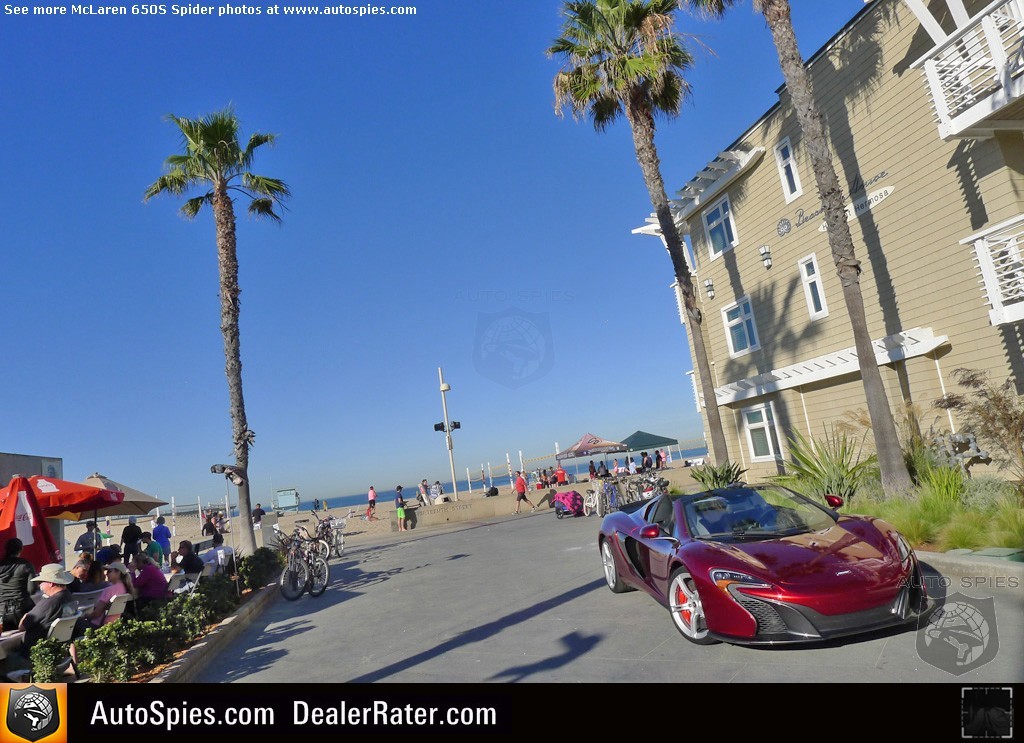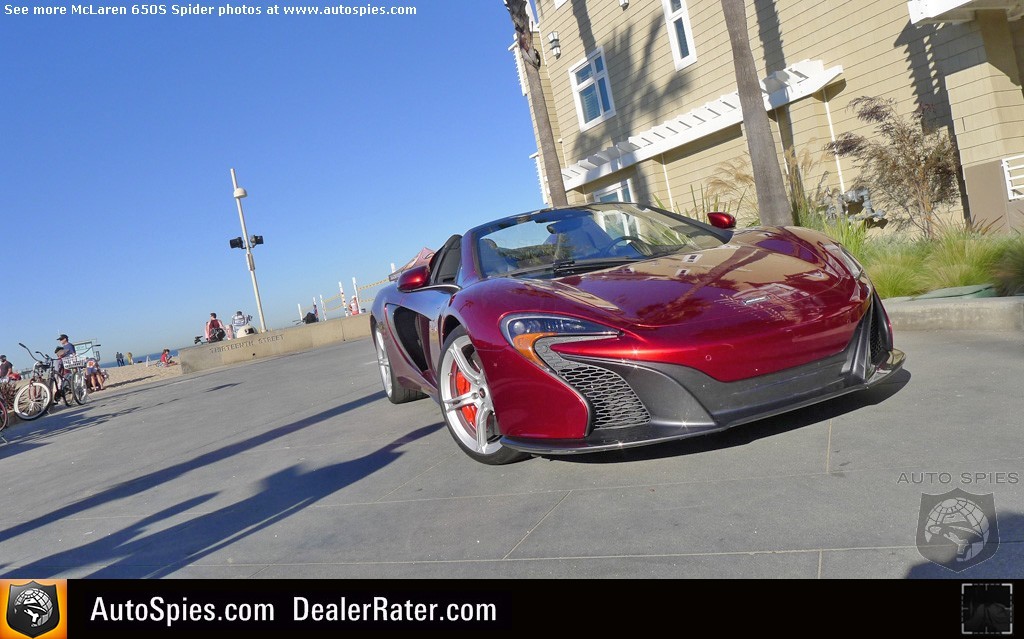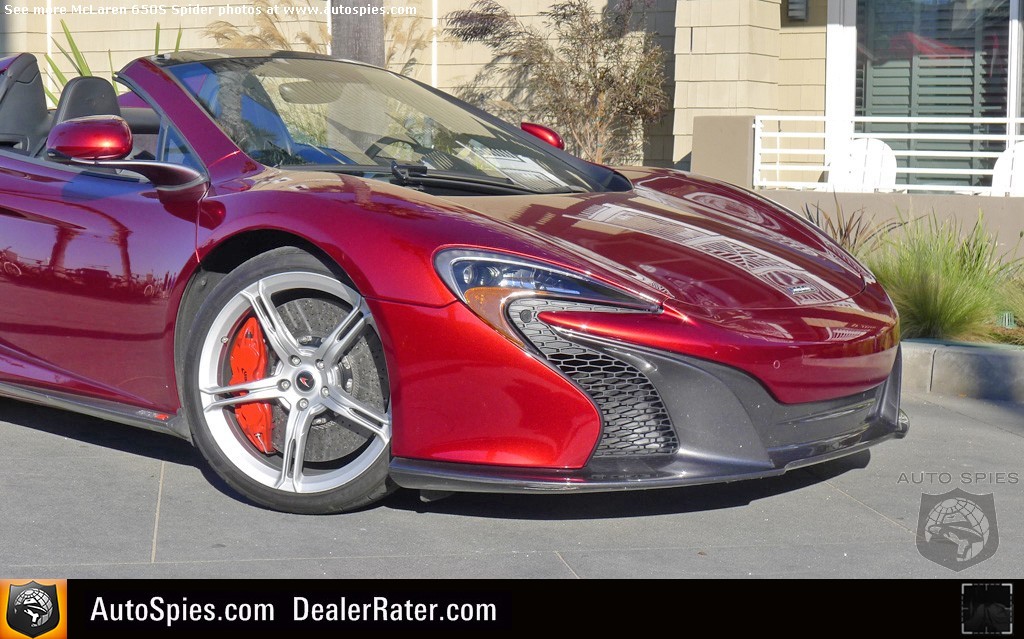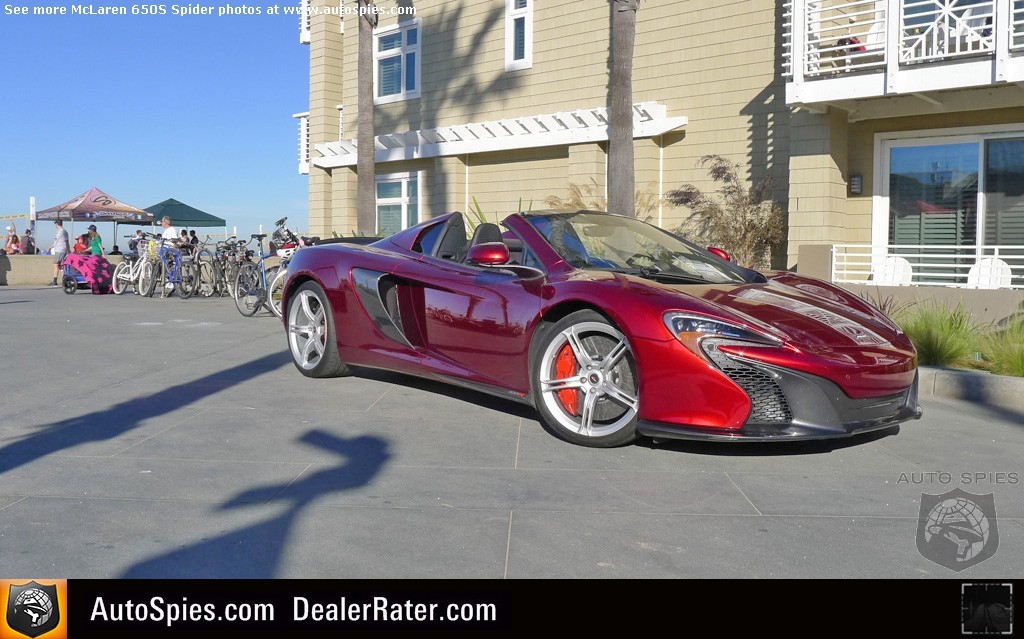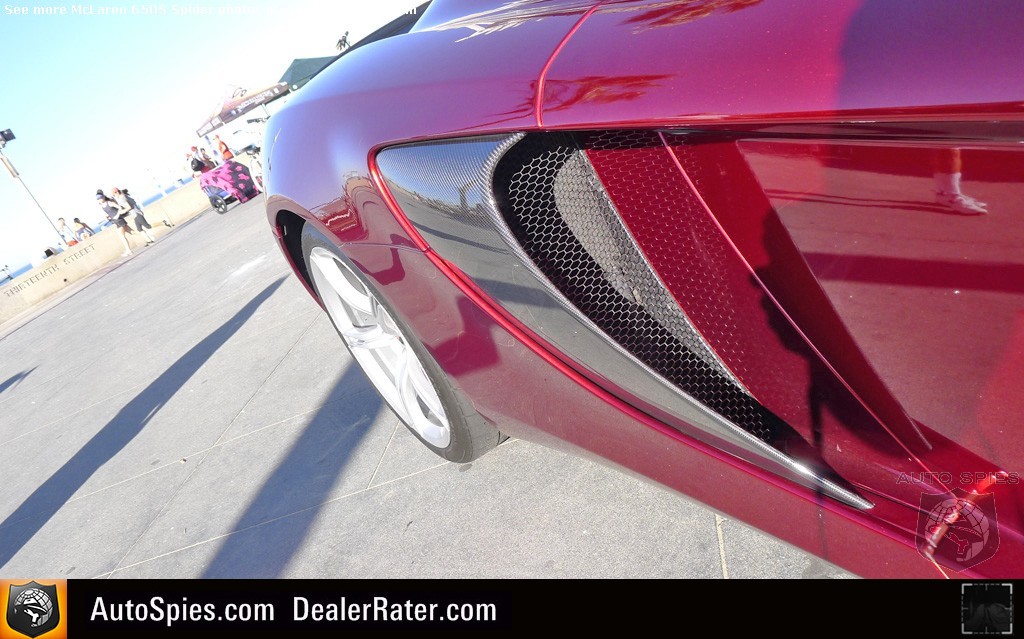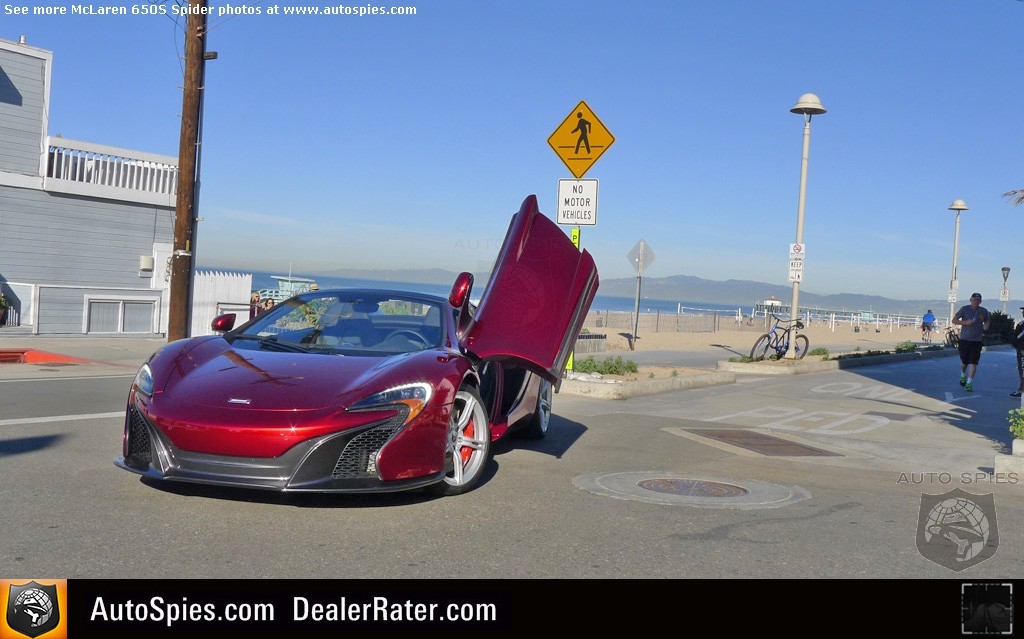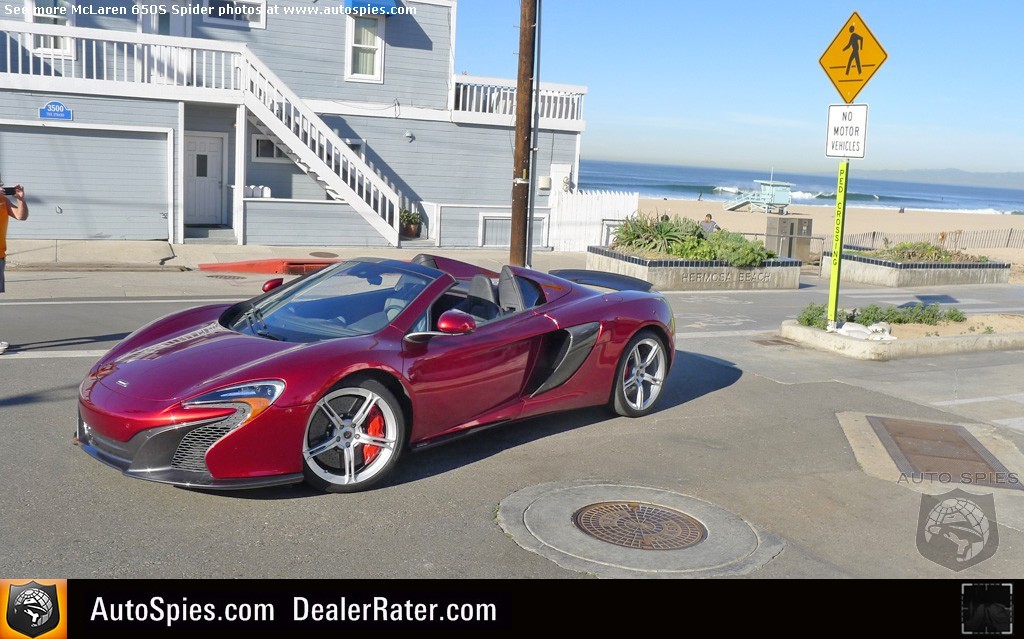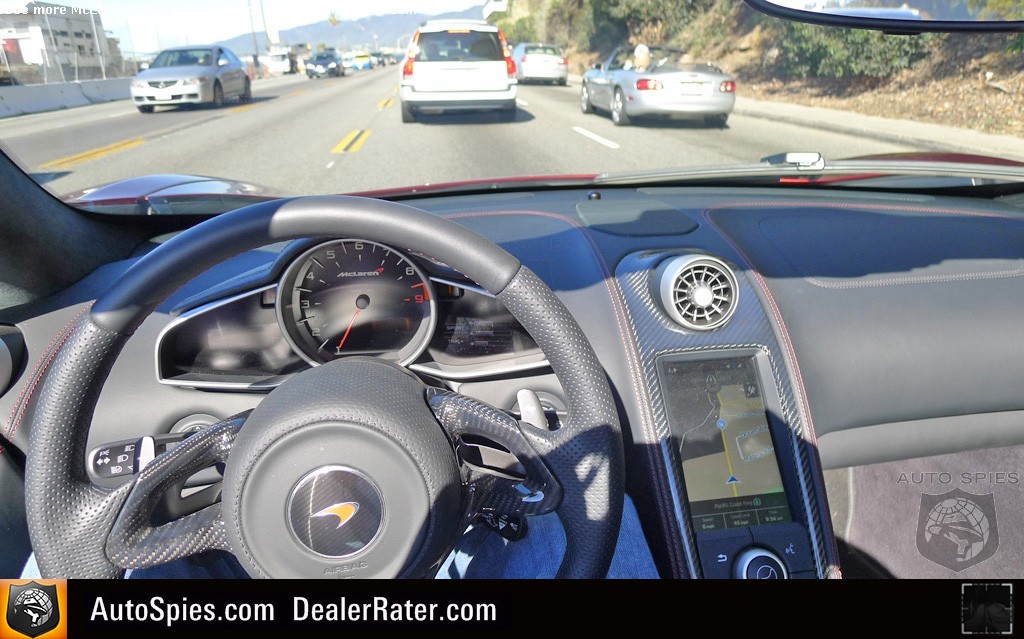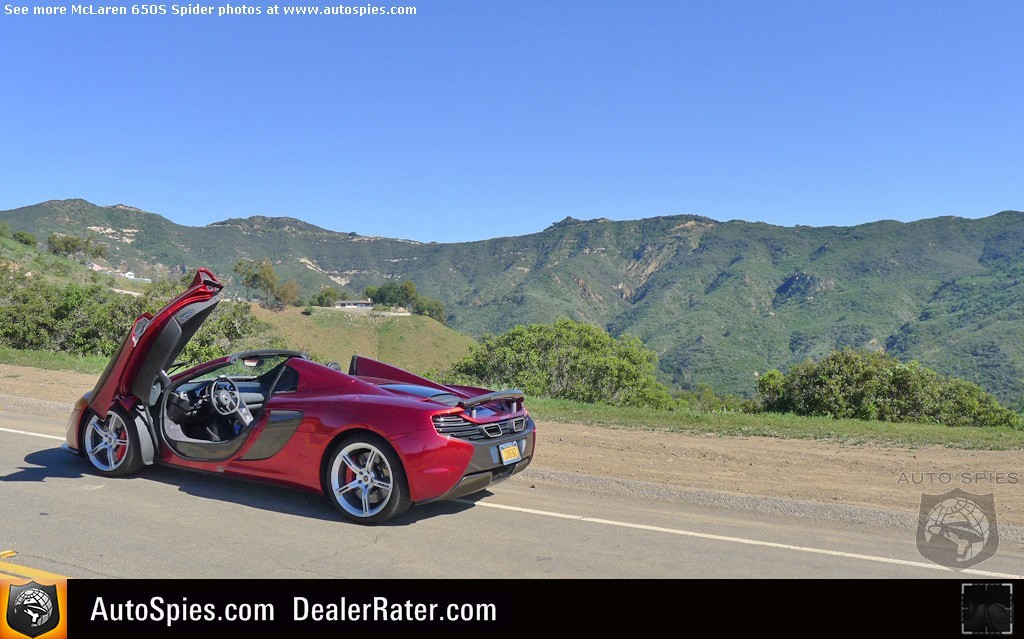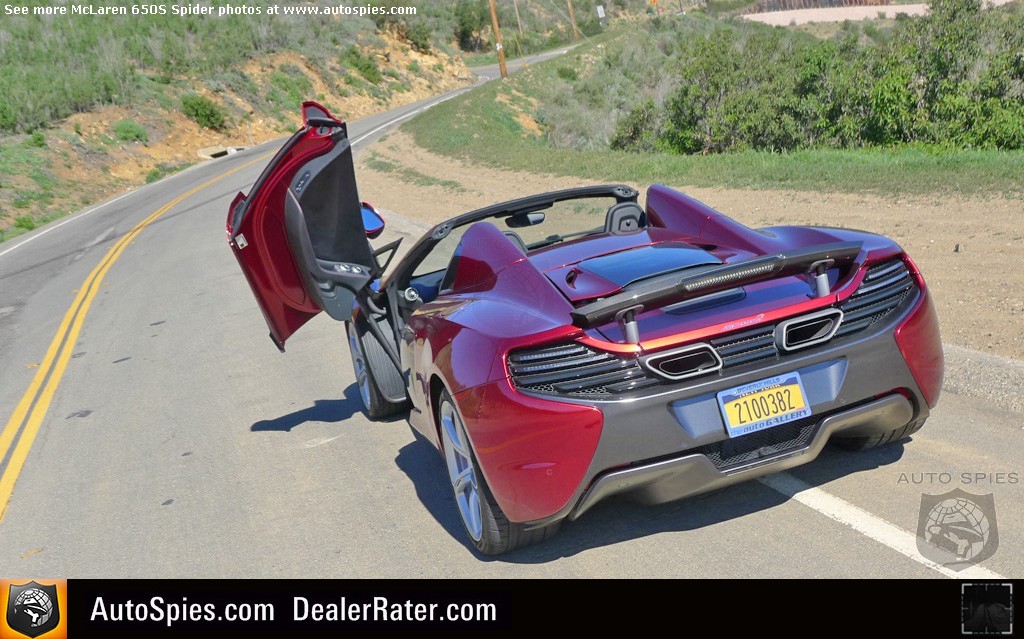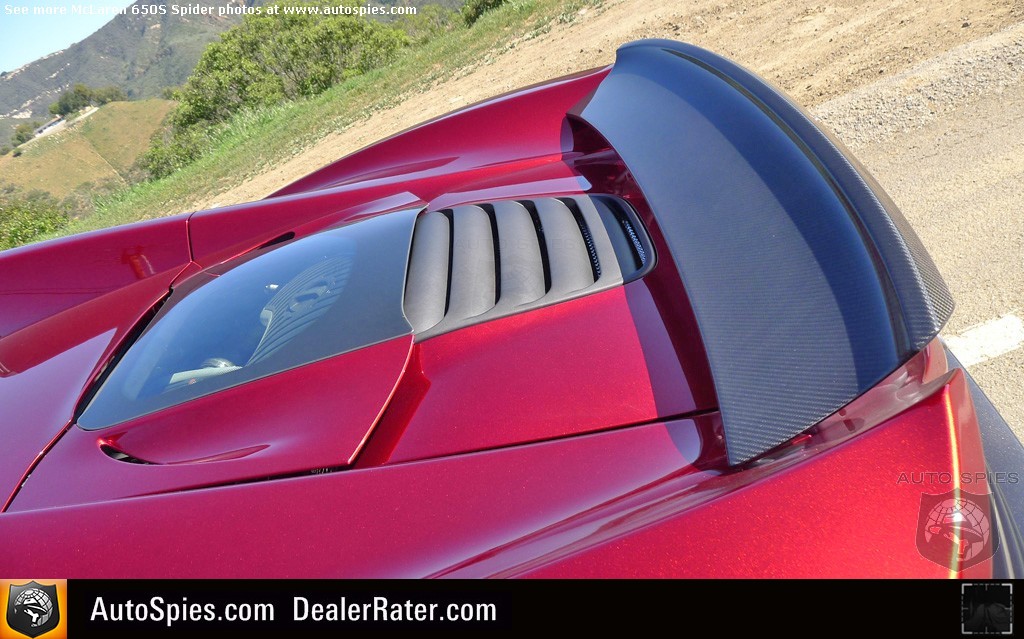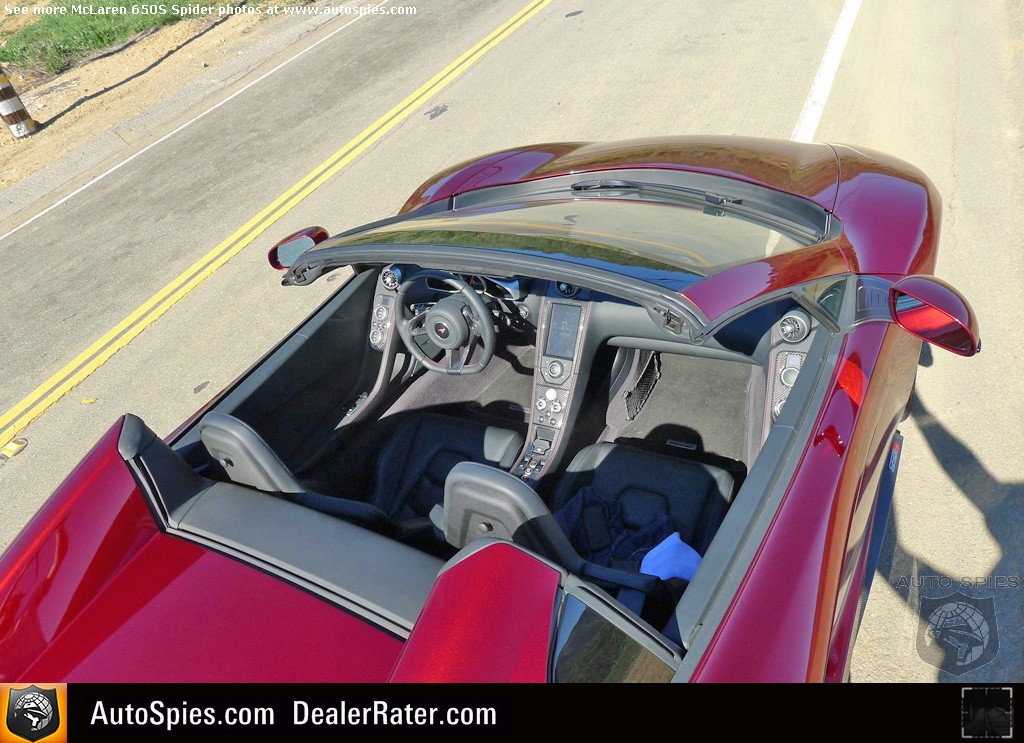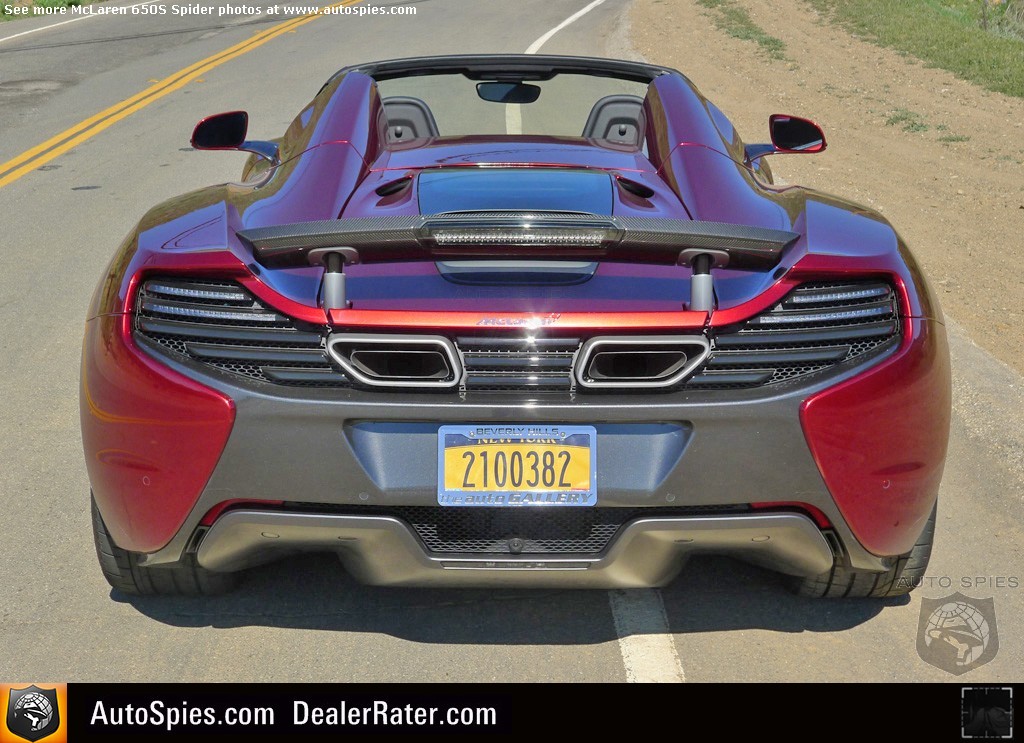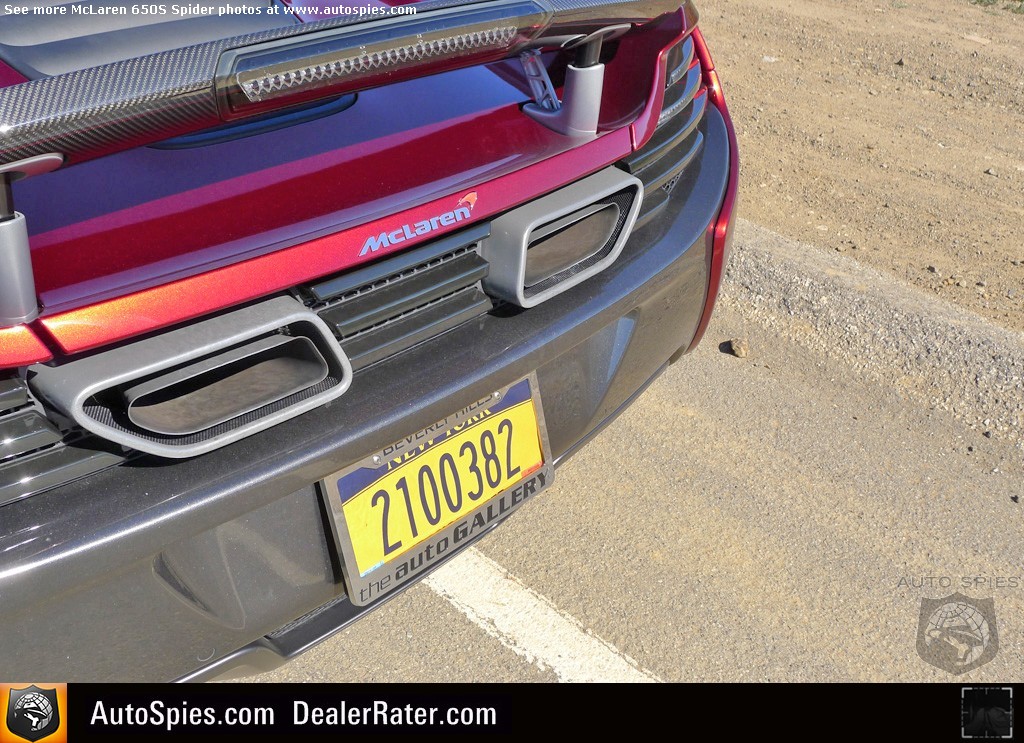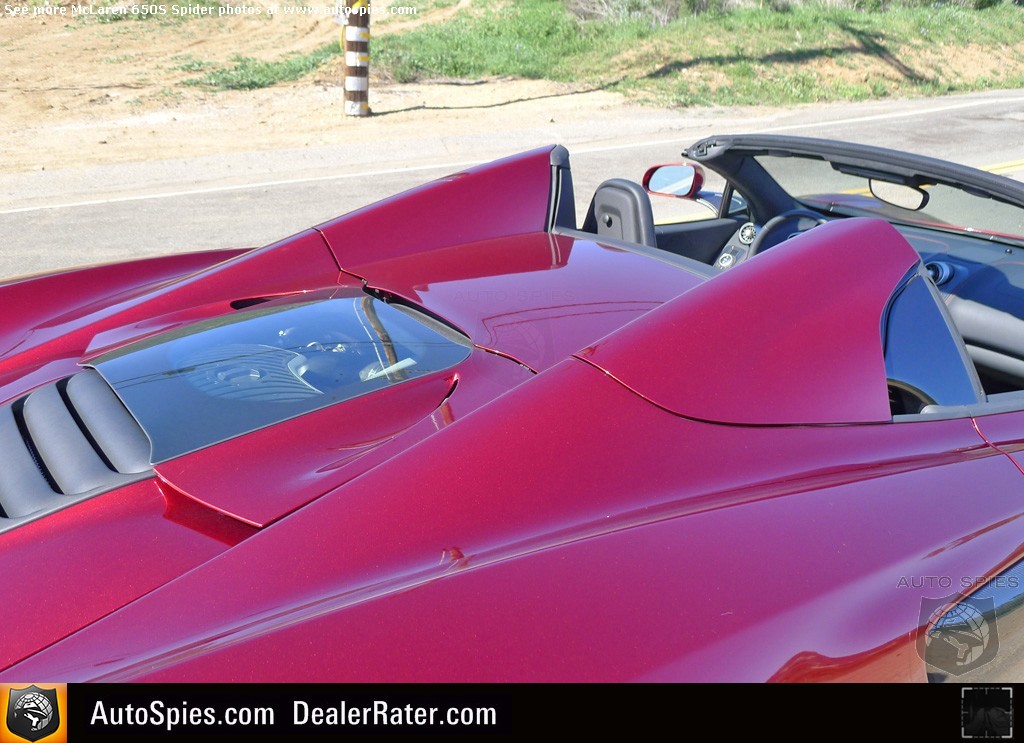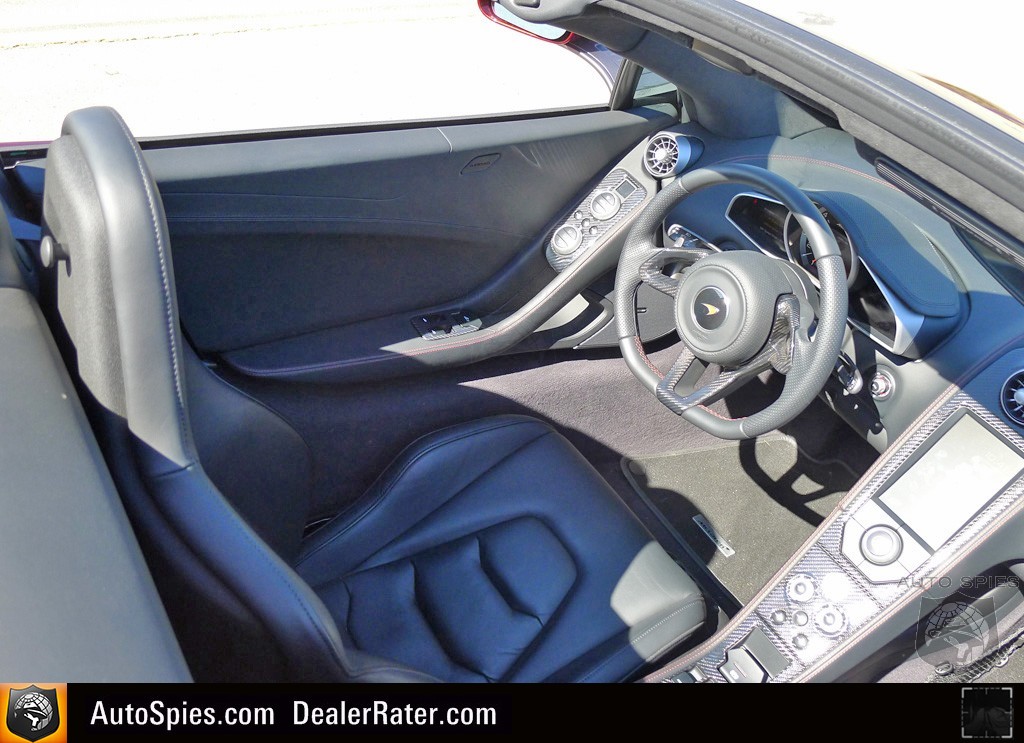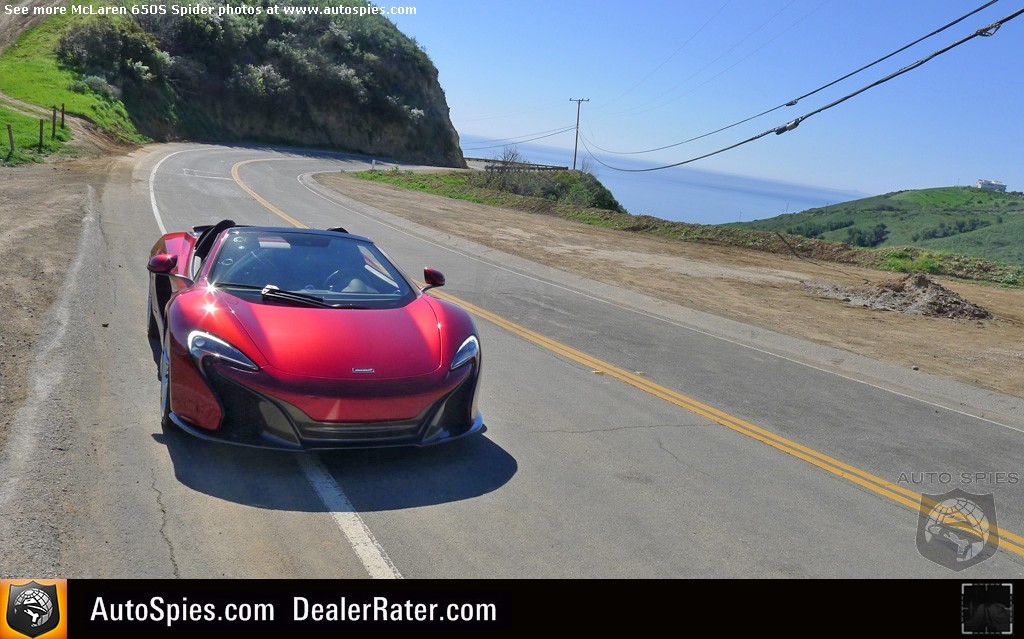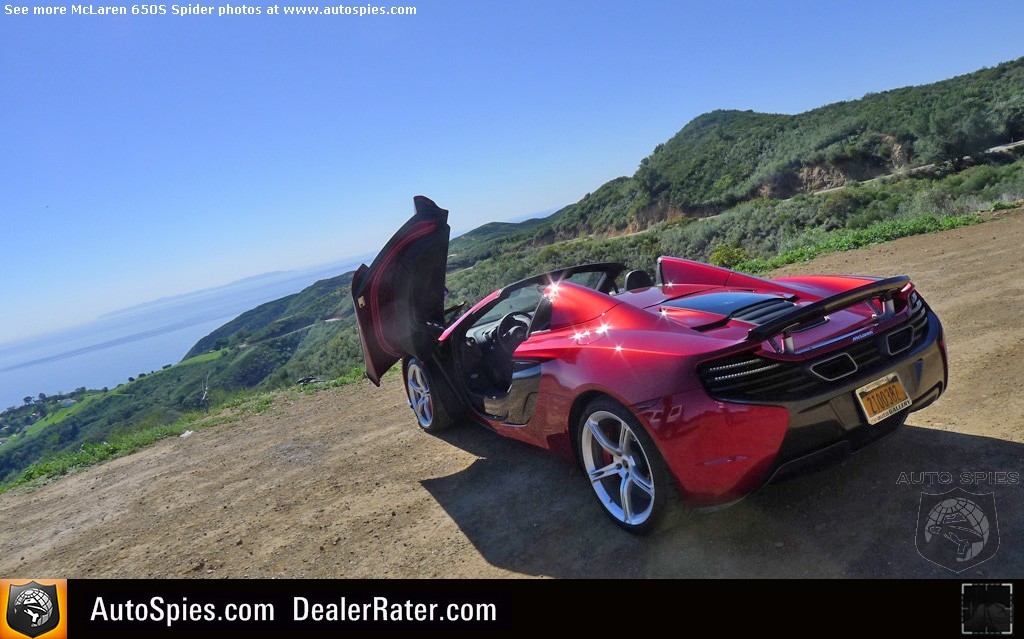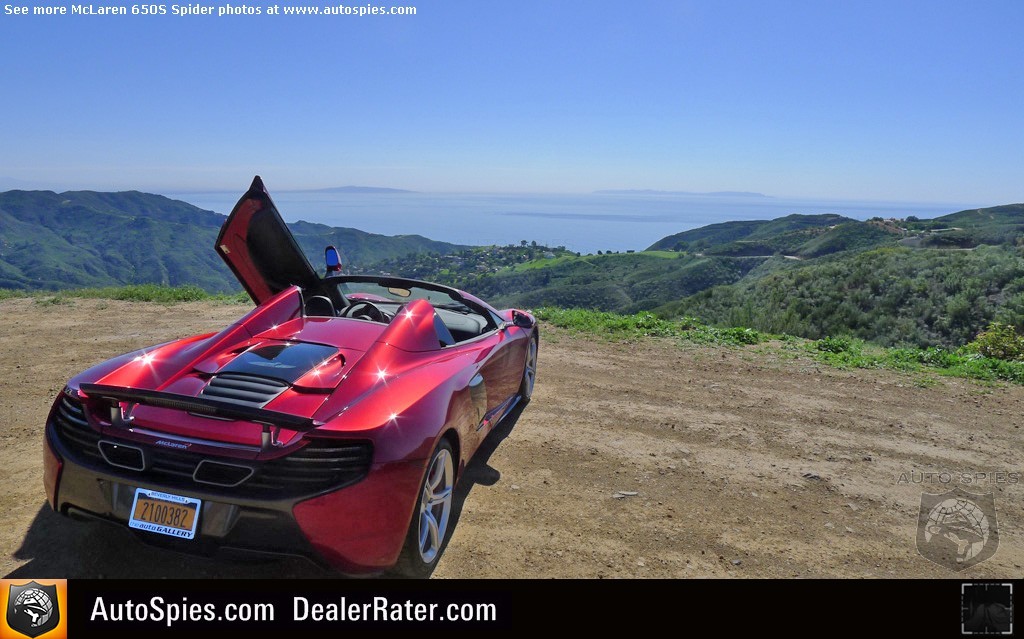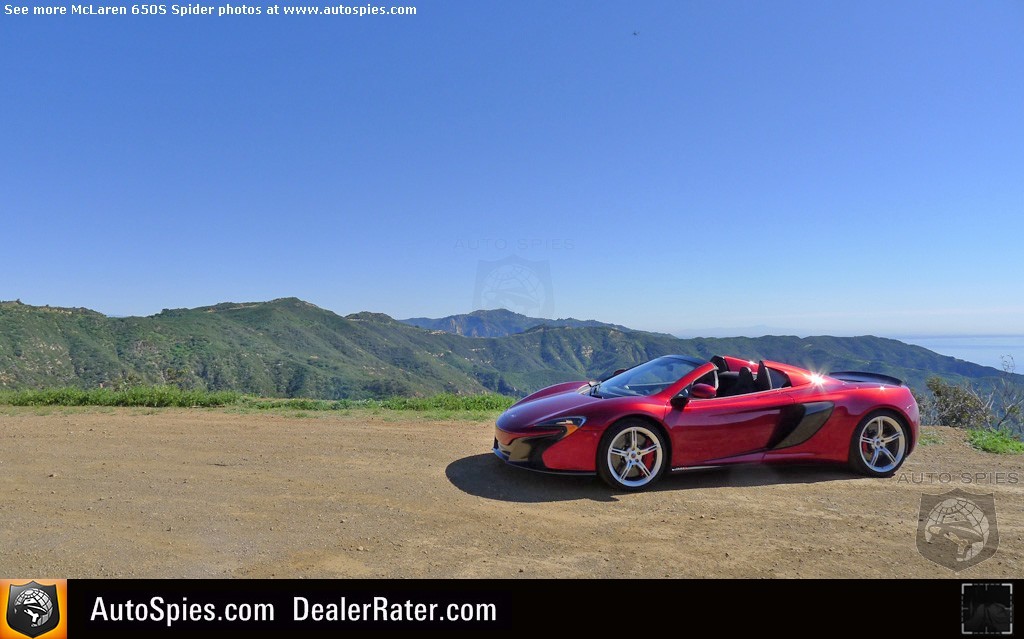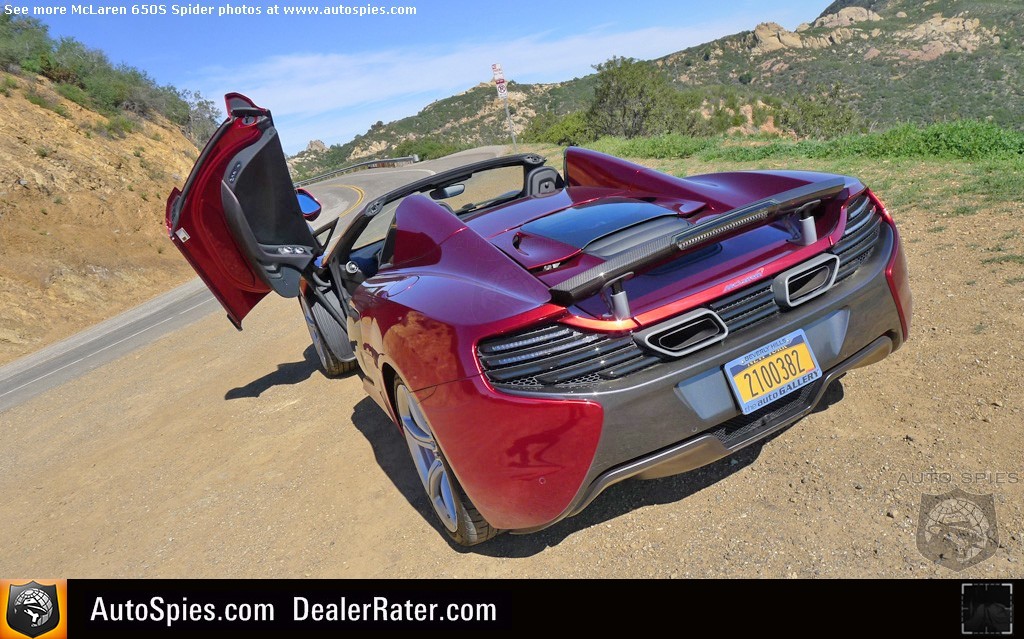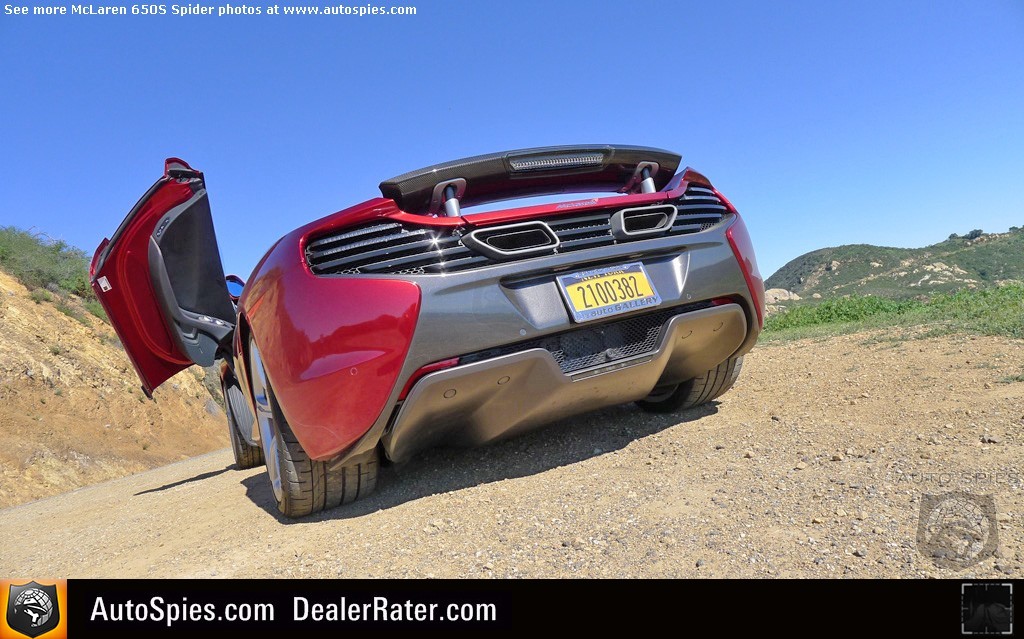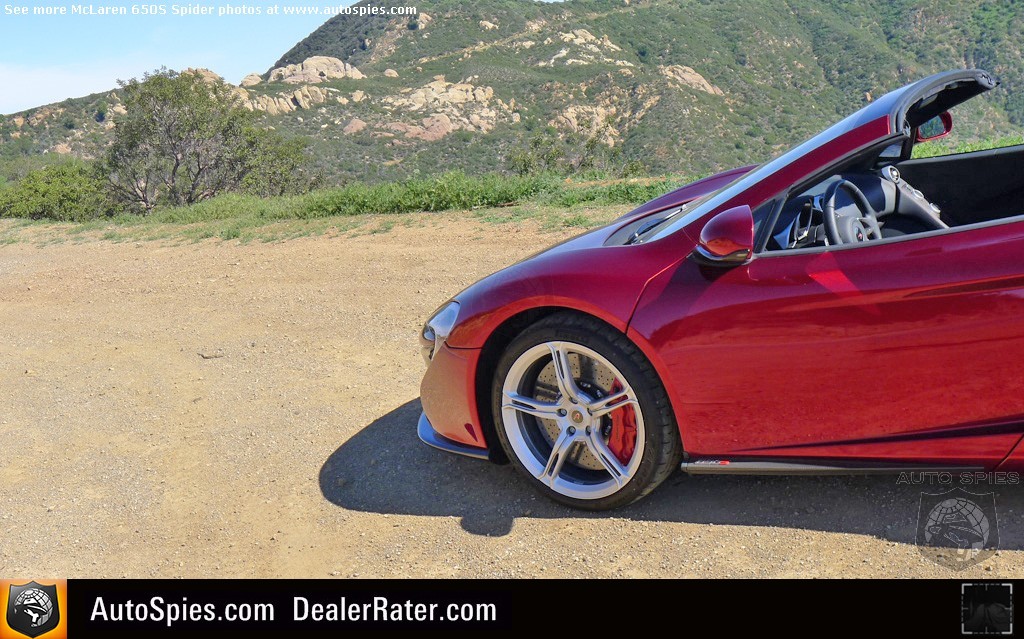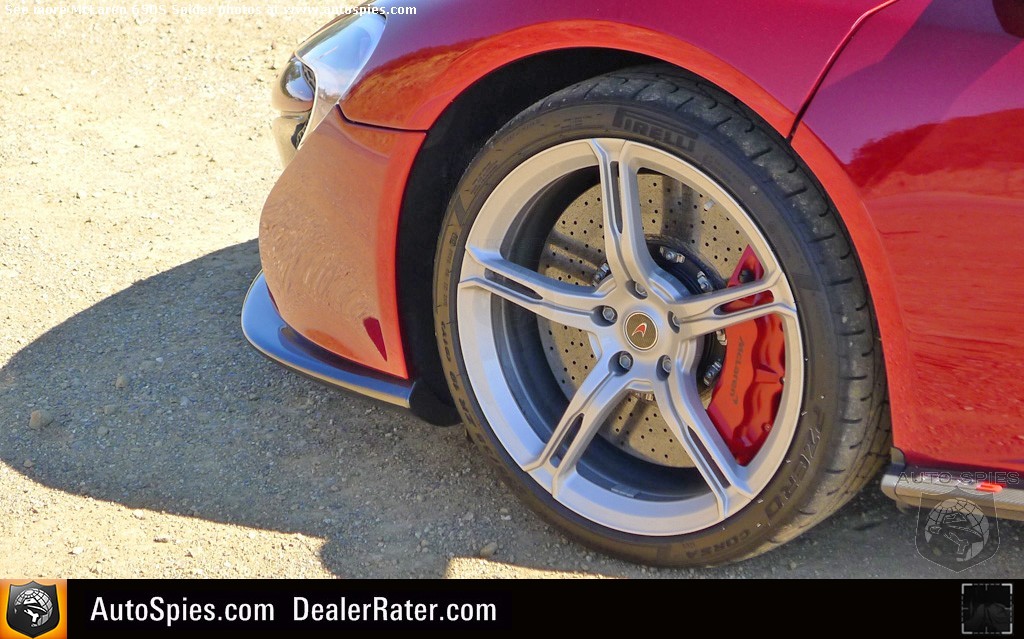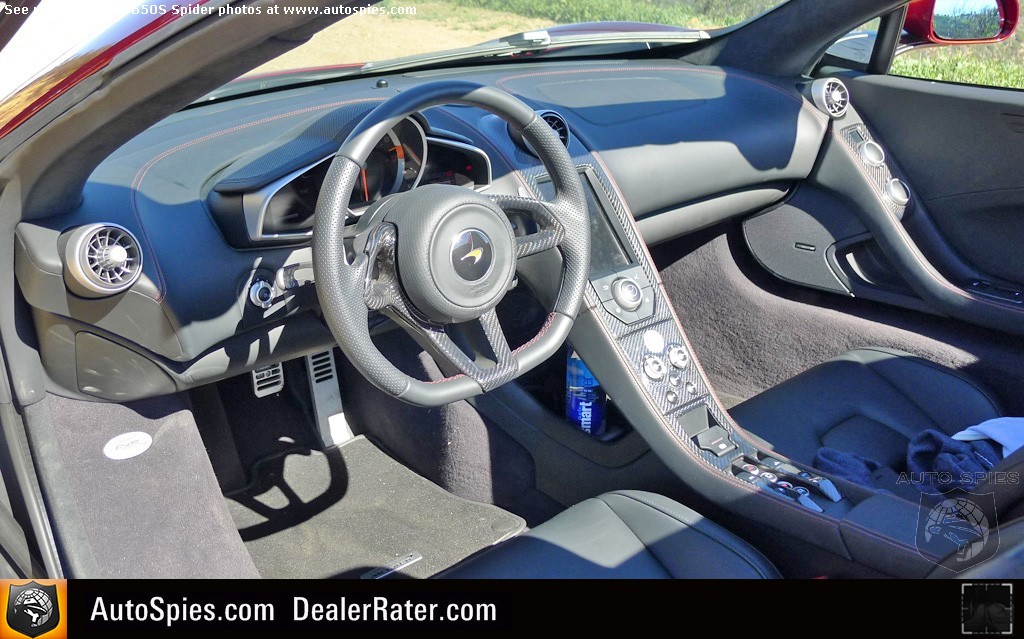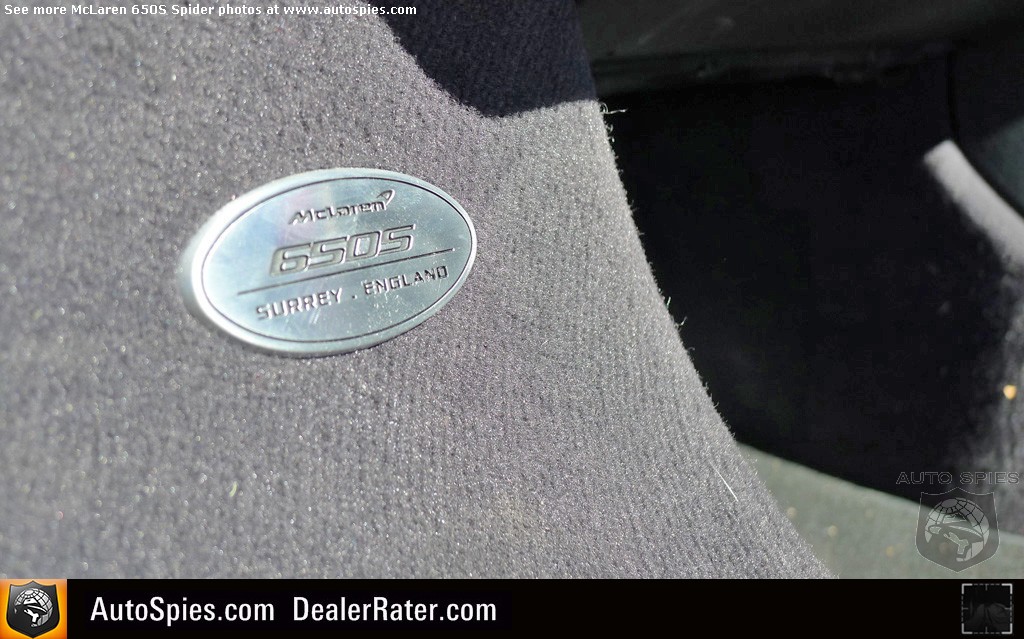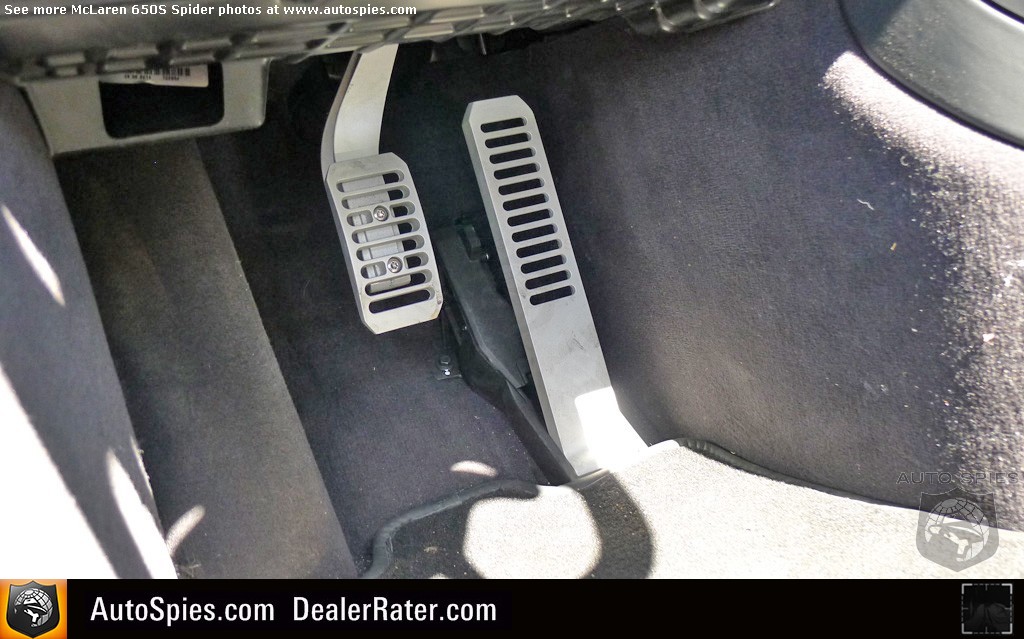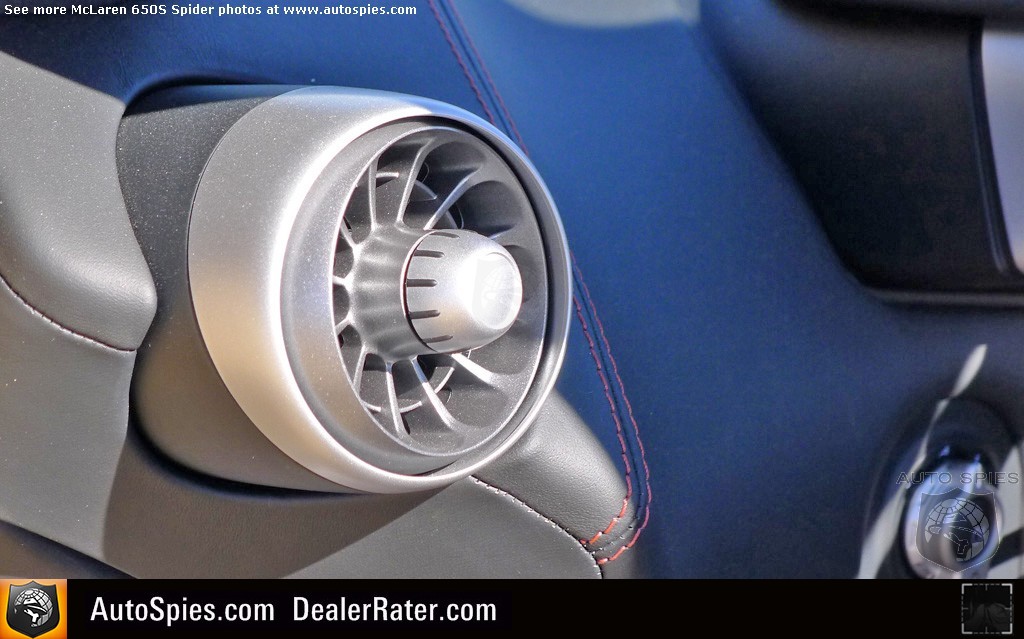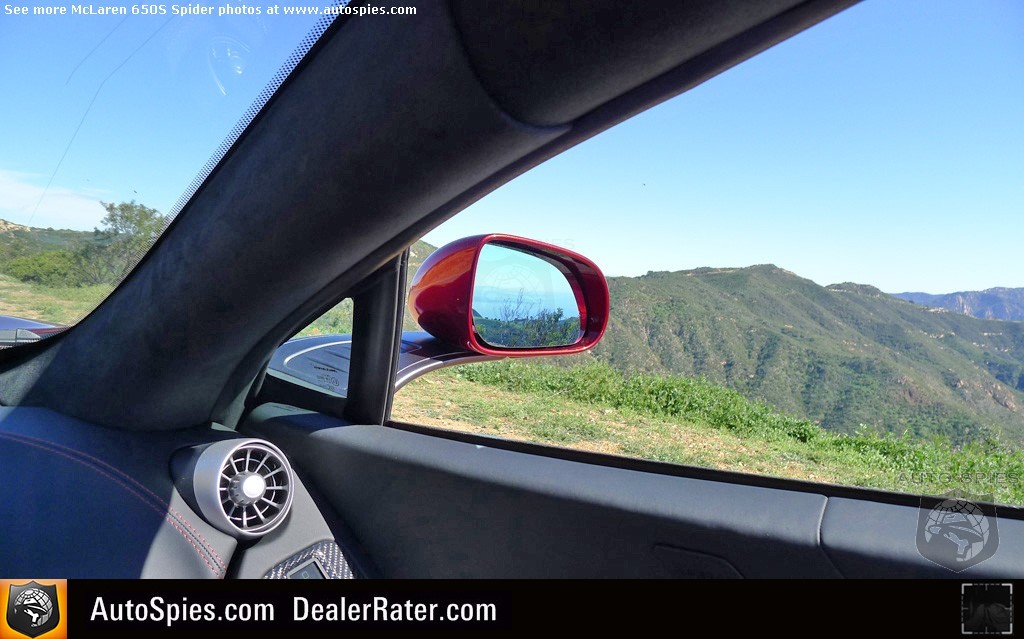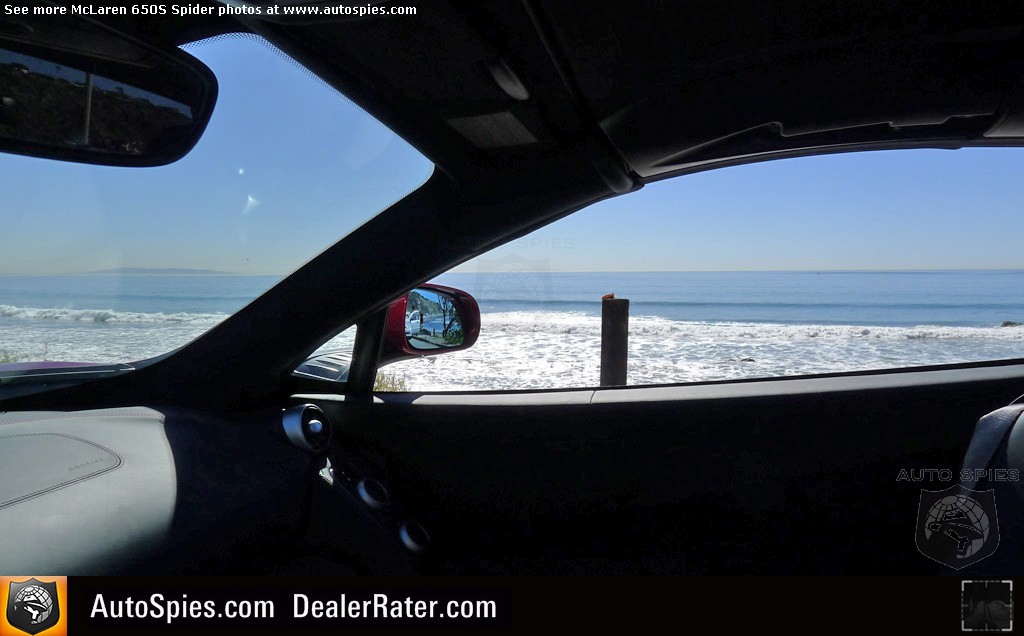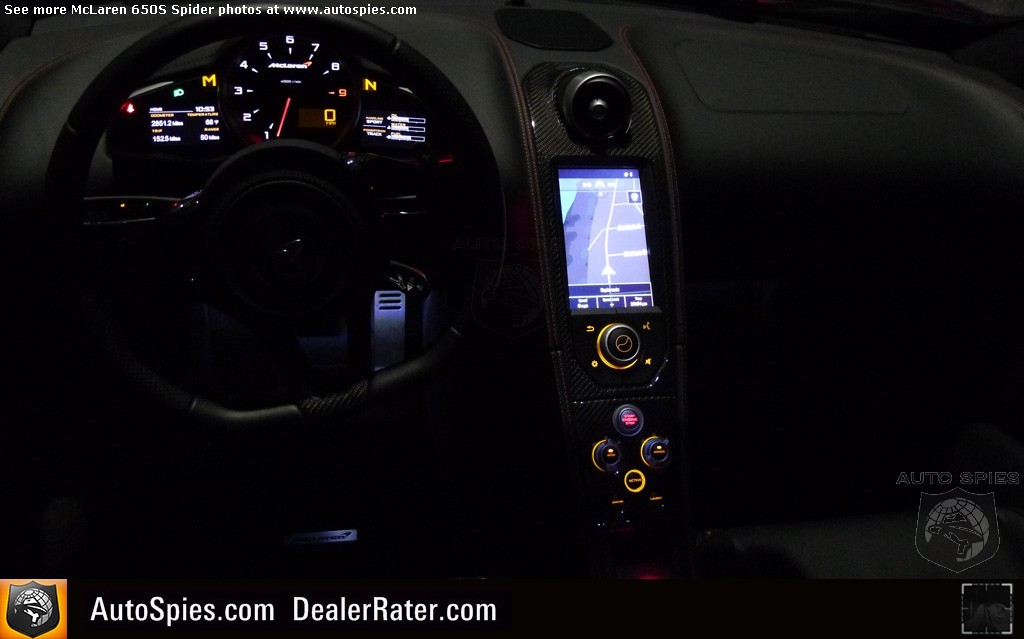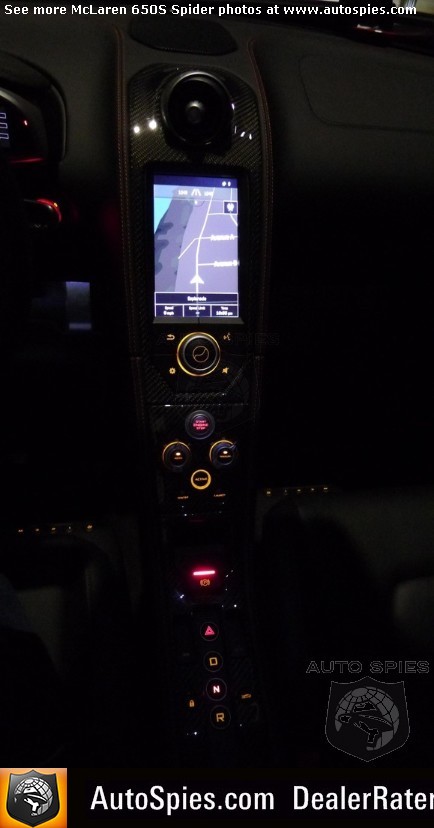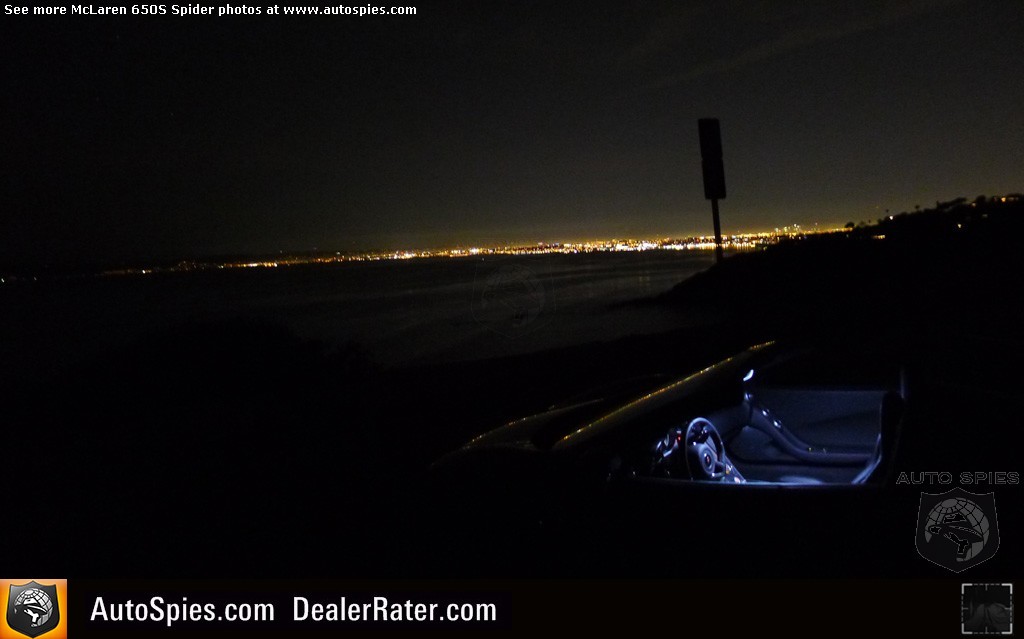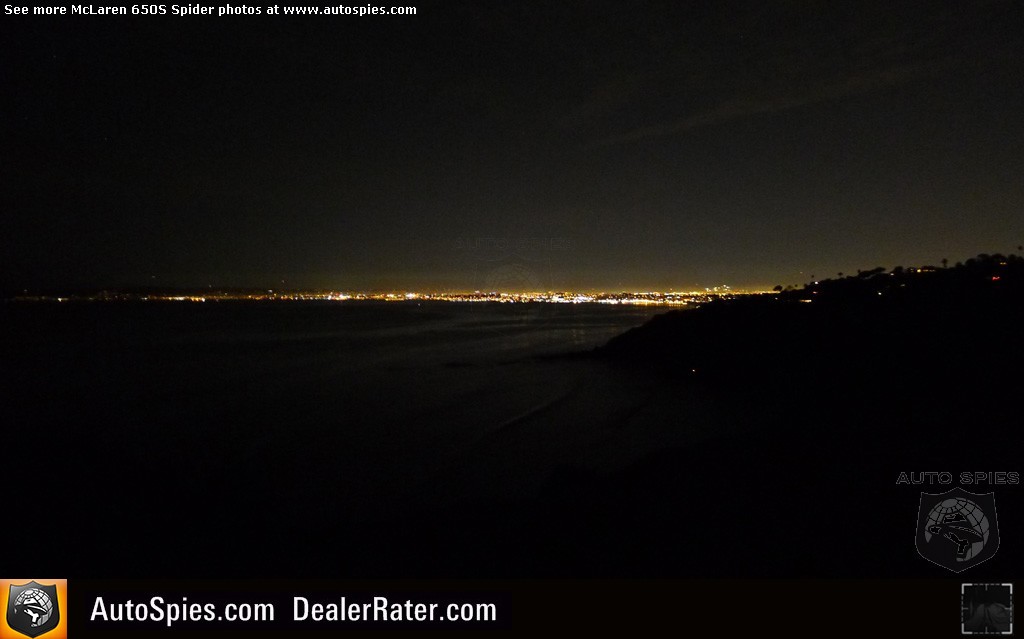Arguably one of the most competitive and innovative segments of the automobile industry is the high-end supercar market. There's a reason for this: auto manufacturers can experiment with technologies from a variety of sources without having to worry about scale. Remember, this is a super niche market with limited production numbers.
Sometimes you'll see a new idea become repeatable and gain an economy of scale as it trickles down throughout more mainstream products. A good example of this is carbon fiber construction, which started out in the aerospace industry and worked its way into Formula 1 racecars. Now, you can see mainstream BMWs using it in their roofs and other areas of their respective chassis.
McLaren 650S Spider
So, what happens when a small auto manufacturer known for its racing heritage decides to start building road-going machines that focus on the latest racing technology? You wind up with an automaker like McLaren though that formula sounds familiar — Ferrari, anyone? Although a lot of car companies like to talk about their cutting-edge knowledge and how it is applied, few do it like this small British outfit. You'll understand later on.
Having never previously driven a McLaren, I was psyched to get behind the wheel of one of its latest products, the 650S Spider. When picking it up at a Los Angeles-based dealership, I realized at first sight it's a very tasty little thing. Emphasis on little. While in traffic, an adjacent Honda Accord dwarfed me.
Pictures don't do this vehicle justice. My test car was painted a candy apple red color known as Volcano Red and at first glance its sensual shapes and curves are reminiscent of a Ferrari. I wasn't the only one who thought so as the next several days were jam-packed with gawkers first shouting "Is that a Ferrari?" followed up by "No? Then what is it?" Be prepared for a little bit of attention.
McLaren 650S Spider
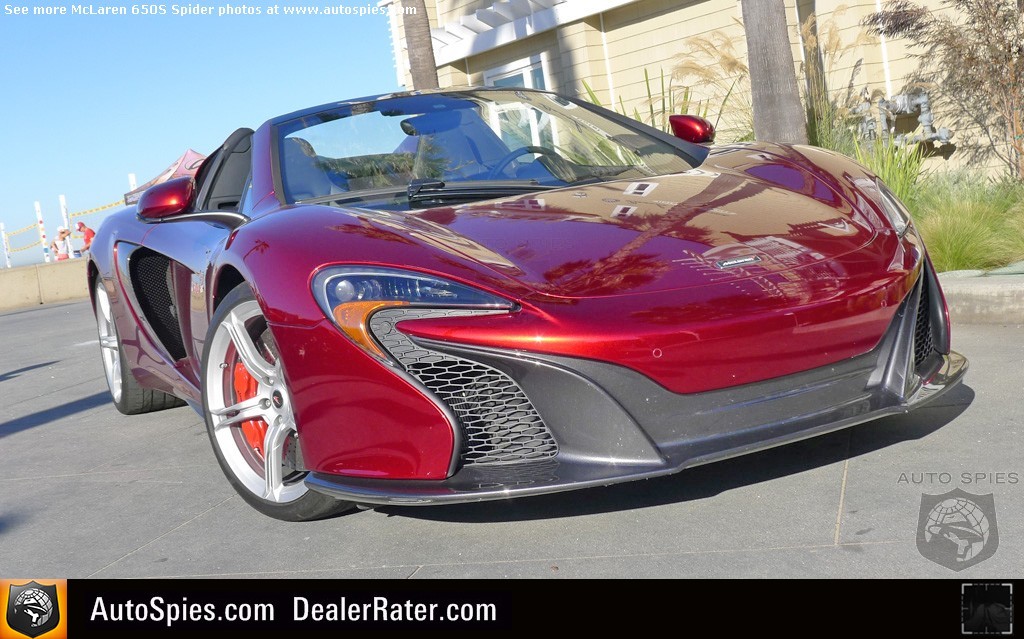
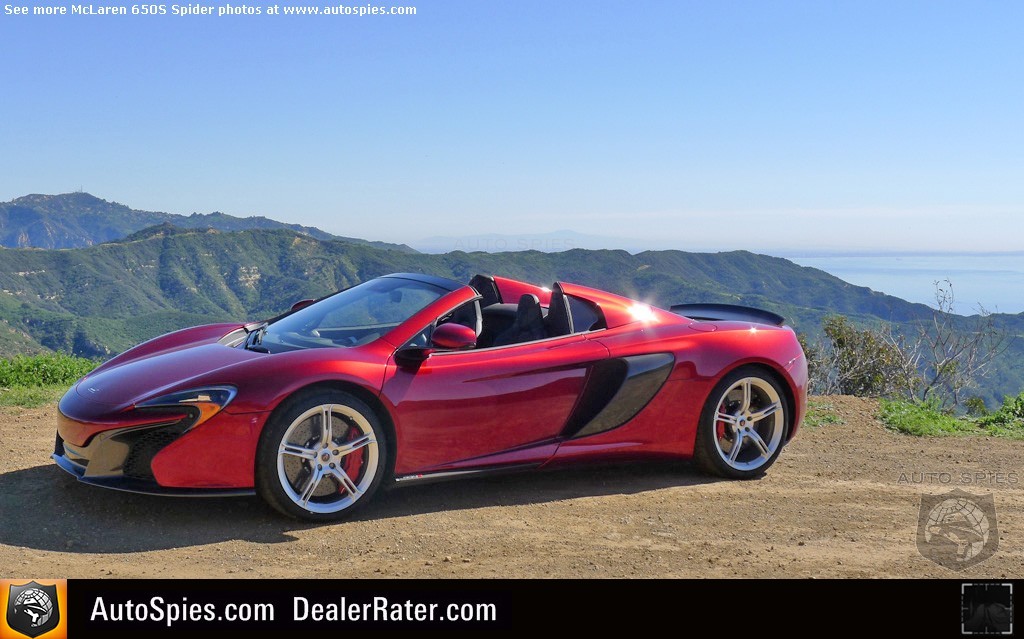
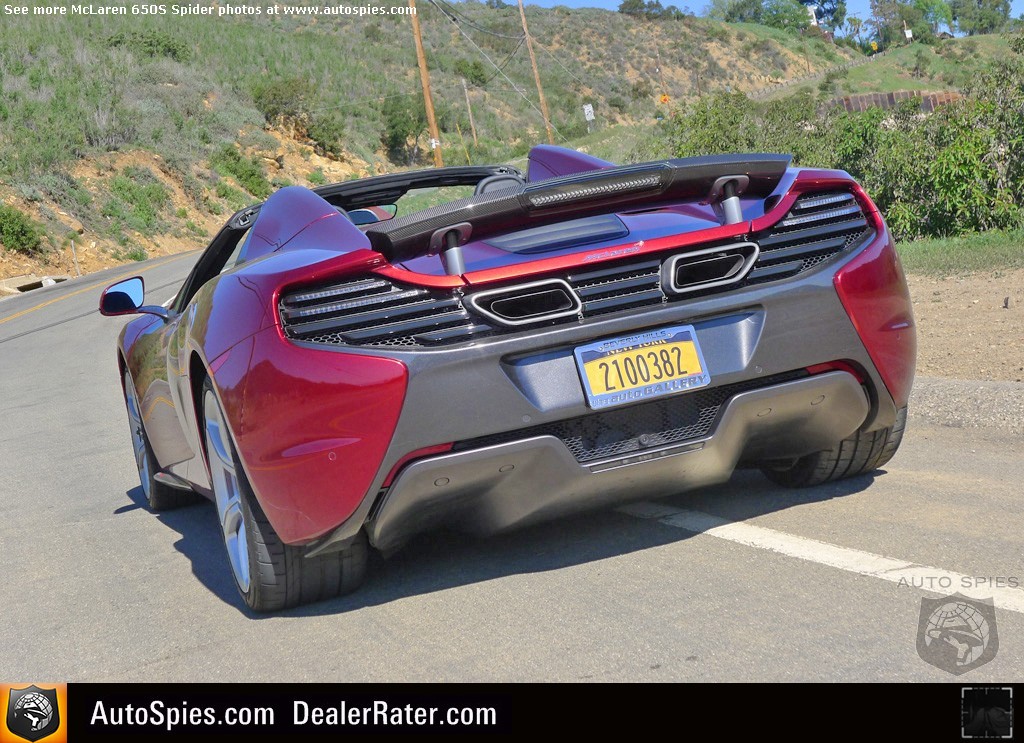
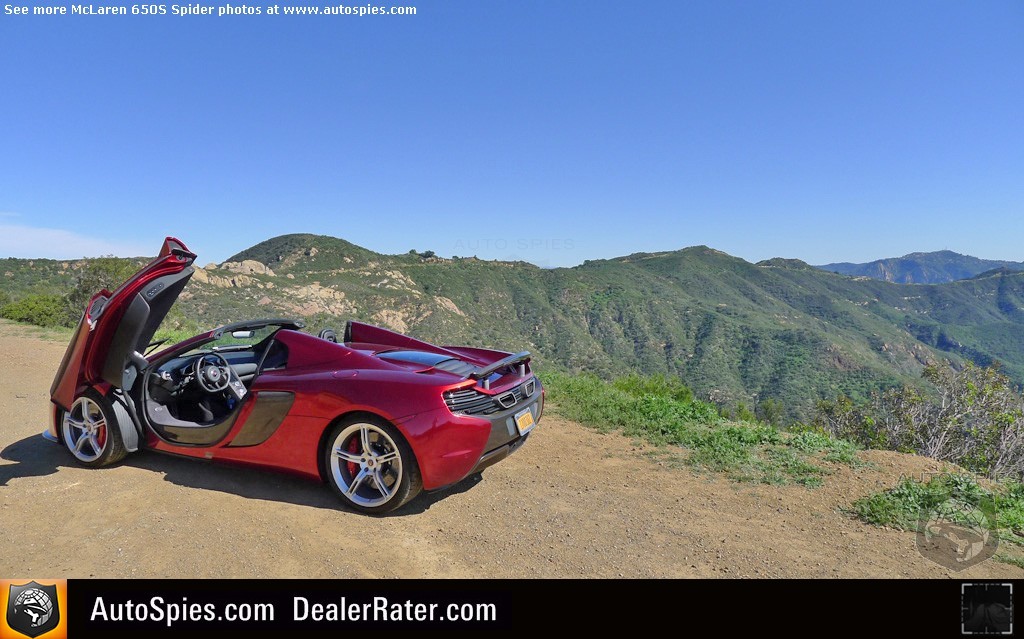
Although I know I shouldn't be so easily entertained as a grown man, but I will admit I did get a bit too excited every time I touched the concealed button to open the dihedral doors. Unlike your conventional doors, these open towards the sky and pivot outwards. Essentially, the McLaren is beckoning you to take a seat and power it up.
Getting situated in the cockpit is not exactly simple and requires a couple of rounds of practice. One of the reasons for this is the tall and wide door sill that makes up the carbon fiber "tub" — this type of construction is similar to that found in Formula 1 cars for extra rigidity and provides protection for the occupants in the event of a crash. Another reason is this supercar is predictably low to the ground and intimate inside. Once you're situated though, you will not want to leave. Mostly because getting out is just as ungraceful as entering. After a few days with it though I managed to get in/out in one fluid motion.
Here's the process: 1) Open the door, 2) work your way around the door as to not bump your skull, 3) put your right foot deep into the driver's side floorboard, 4) bend your knees and lower yourself so that your bum rests on the carbon fiber tub, 5) pivot yourself so you're totally facing the front of the vehicle, 6) slide yourself into the driver's seat, and 7) close the door.
Being 6'8 certainly made it a bit more comical but I will say that, yes, I fit inside with complete comfort and zero concern. This shocked a sales rep at McLaren Greenwich when I stopped in to ensure I would fit when I arrived on the left coast. She said "No one over 6'3 has fit."
Well, take that.
Now this is where things get interesting. Being a British-built auto, it has to have just a bit of "quirk." The 650S doesn't disappoint. Rather than locate all of the vehicle's controls on the center stack as in mainstream autos, the company decided to locate the HVAC controls on the doors. It takes a day to adjust but once you do I reassure you it isn't an inconvenience. Taking up prime real estate in the Mclaren's floating center stack is your infotainment screen that's essentially the size of a mobile phone. While I must admit the software and graphical user interface is impressive — it's fast and operates in a very slick manner — the navigation system was eager to put me off course as the global positioning system (GPS) seemed to lose track of the car. I swear I wasn't going that fast. Obviously, this needs some work. In addition, navigating the system's variety of menus is a bit counterintuitive.
What doesn't need some fixing though is the quality of the craftsmanship inside. I tried to find an imperfection but I didn't note any. The stitches were tight and the fit and finish was solid. It's clear that there's attention to detail, which isn't always the case with supercar manufacturers. A good example is another British automaker, Aston Martin. While I adore Aston's products, in every car I've experienced there's just one thing that's off from a quality standpoint. That's simply not the case here.
McLaren 650S Spider
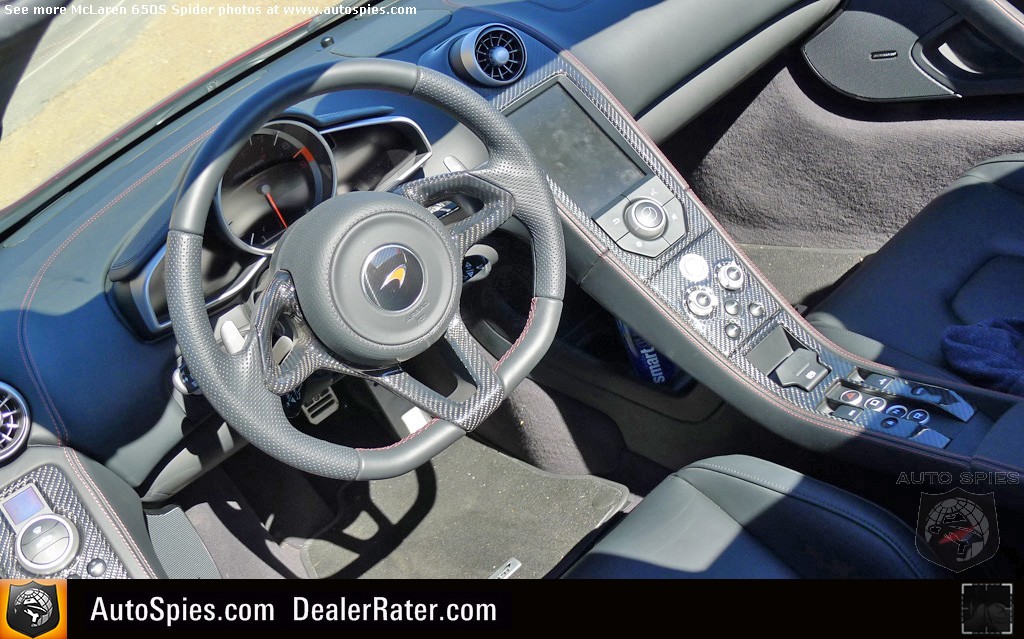

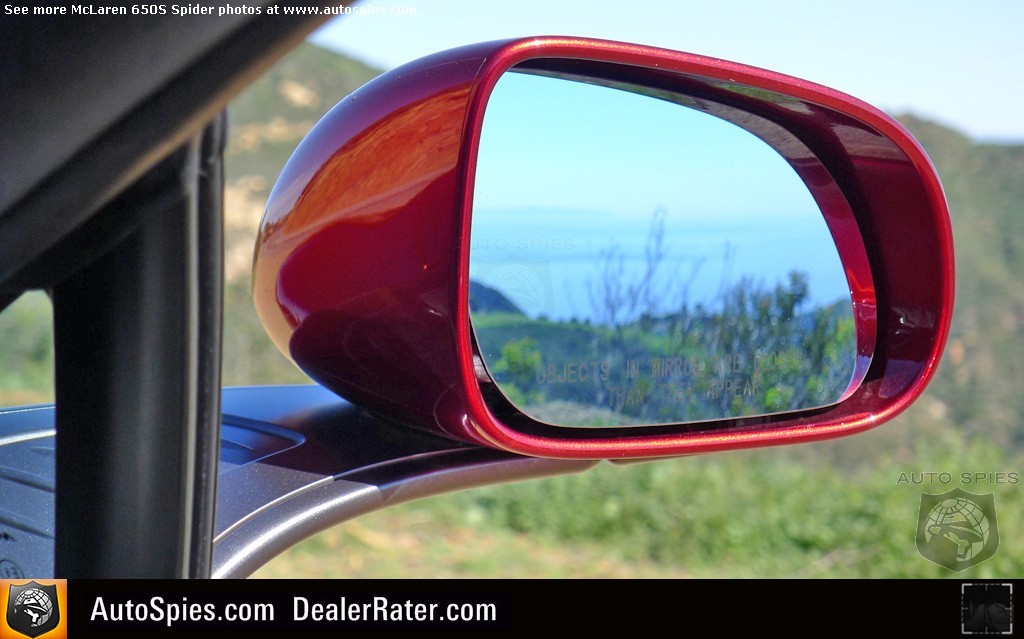
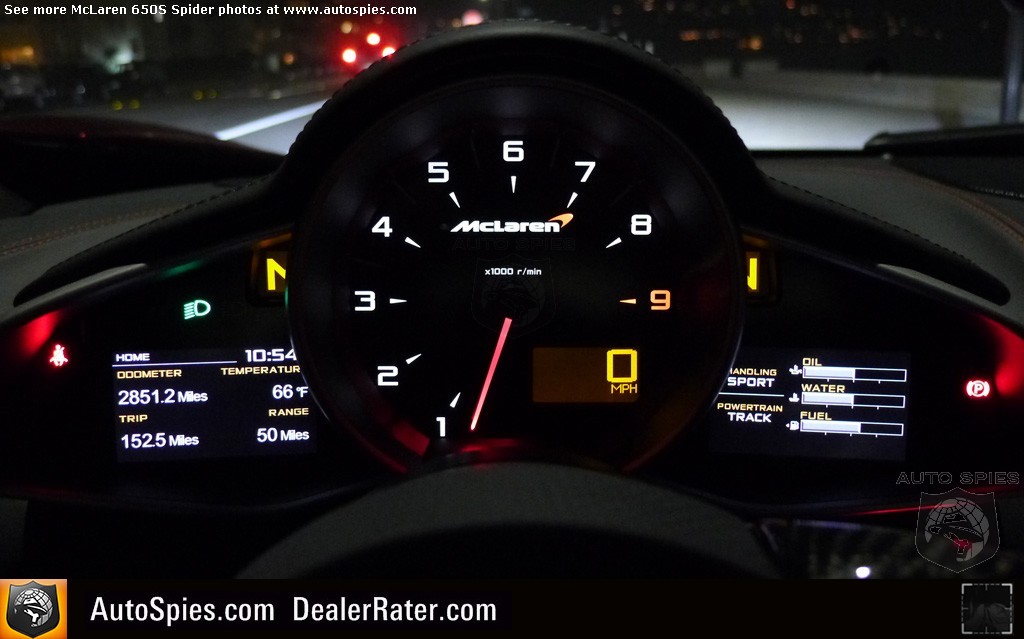
While this is all good and well, the 650S is really meant for driving. Powering up the McLaren requires a touch of the silver-colored start button and then you've awakened a rather burly sounding 3.8-liter, twin-turbocharged V8 motor that churns out 641 horsepower and 500 lb.-ft. of torque. As you may have guessed, this car is fast. Zero to 62 mph happens in three seconds flat. What's even more impressive, however, is this auto's seven-speed dual-clutch gearbox. The combination of power and this transmission's refinement is truly exceptional. You don't really need to downshift to get ahead of the Toyota Prius blocking your path on the 405, you simply apply the throttle and off you go. But, if you're looking for some excitement — and who isn't — set the powertrain mode to Track and downshift only once. The vehicle doesn't shutter or jolt you, the revs simply climb, the V8 lets out a scream and once you get around the calamity of traffic, you're free.
And this is when the real fun happens. McLaren tuned the 650S to provide occupants with a symphony of noises that vary depending on the powertrain setting and how much load is applied to the vehicle. In Track mode with wide open throttle, I can hardly find the words to describe what I heard. I think Epic with a capital "E" is a rather fitting way to summarize it. There's pops, the turbochargers squeal, a monumental sound of air being sucked in and a series of noises that I have absolutely no idea where they come from or why they happen. What I do know though is it is all very exciting and this is when the car started to seduce me.
If I had to pick one thing that truly staggered me though, it would be the 650S' steering. It is super direct and undoubtedly the most communicative I've felt in a modern day automobile. It's been approximately 10 years since I drove a vehicle that spoke to me through the steering wheel like this and it's something I've been yearning for. Hell, it's something the enthusiast community has been yearning for. While most of today's supercars have become quite numb to the road they ride on, the McLaren provided me with what felt like a detailed report of the road surface beneath me. Between this and the incredibly direct steering rack, I felt super confident pushing this vehicle through Palos Verdes' winding boulevards.
There's just one thing. The 650S' super connected feel can backfire just a little bit. While the suspension and carbon fiber tub provide a driving experience similar to that of a coupe, which trumps the Ferrari 458 Spider that feels a little loose in comparison, you will definitely notice it in the cockpit. Even with the suspension dialed back to Normal mode, I found the relatively small raised reflectors in SoCal's smooth pavement to send a jarring reverberation through the cabin. That was paired up with a loud smacking noise. Is it entirely optimal? No. What I will say is that this is price of admission for a vehicle that is SO connected and so much more rewarding to drive over its competition.
Personally, in a auto like this, I'd much rather have a raw feeling over an isolated one.
What really boggles my mind though is how there's been a litany of critics who have said this vehicle has no personality. WHAT?! How's that possible? With all of these noises, the slight rumble of the V8 through the carbon fiber monocoque, the active aerodynamics that push up the MASSIVE air brake when you need it, and the BEST steering I've felt in a modern supercar, how is it ANYTHING but alive? For me, this is the latest proof that these geezers covering the auto space are "in the bag."
This is the McLaren's true differentiator. Sure, it is much more rare than the Ferraris and Lamborghinis that litter SoCal, Miami and even New York City, but if you're looking for a proper visceral experience, there's no question in my mind that you have to opt for the 650S. The exclusivity is merely a bonus in this case.
In other small volume supercar manufacturers you may have to sacrifice creature comforts and build quality to obtain this level of soul, but that's not a concern in the McLaren. Although some may argue the Ferrari 458 may provide a better return on investment down the road, and a Lamborghini is a more vivacious option, I'd opt for the best.
In other words, I'd have the McLaren.
The Good:
- I have not driven an all-new vehicle in 10 years that has steering feel and responsiveness that's even remotely close to the McLaren's — truly in a league of its own here
- My God, the noises you'll hear when you're getting on this thing — completely sensational
- The 650S Spider is silly fast, it feels like a monster when compared to the 458 Spider
The Bad:
- It doesn't exactly handle road imperfections the best, simply driving over SoCal's road reflectors presented me with a jarring vibration through the cabin
- Getting in and out is not what I'd call easy — the dihedral doors and massive sill work in harmony to make your life difficult
- Observed mpg: 10 — then again, you should know what you're getting into with 640+ horsepower
The Lowdown:
To me, the reason why Ferrari has even bothered to start using forced induction on its vehicles is because of McLaren's desire to not just play with the F1/P1 level of supercars. Now it's dipping its toes into the "entry-level" supercar range and the MP4-12C/650S knocked Ferrari back on its heels. Compared to the 458, the 650S is simply better in all regards — the only exception being styling, which is purely subjective.
McLaren 650S Spider
